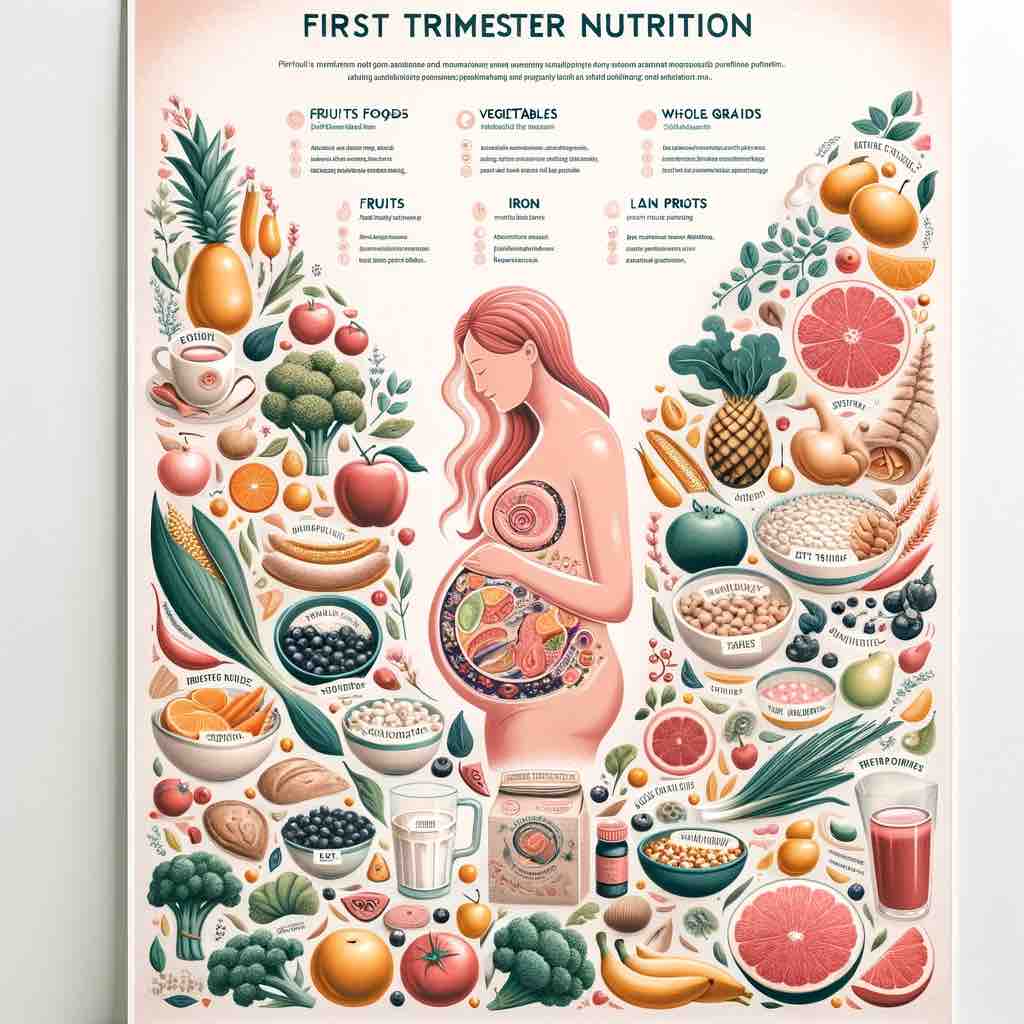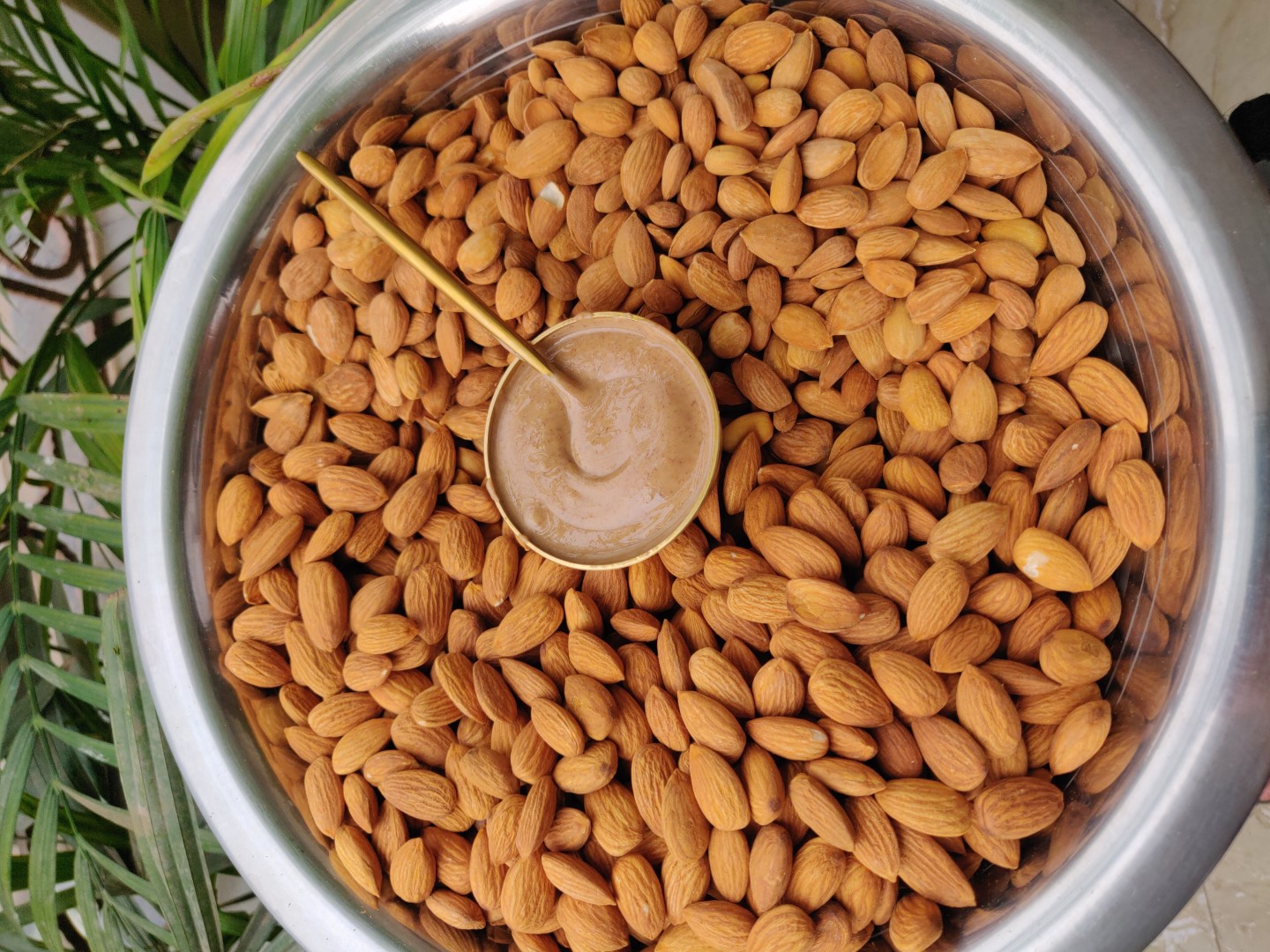
Welcome to a transformative journey where two hearts beat in unison, where life blooms within, and every breath weaves a bond stronger than words. As you embark on this magical path of motherhood, it’s essential to nurture not just the life growing inside you but also yourself. This is where prenatal yoga – an ancient practice tailored for the modern mother-to-be – becomes your companion, guiding you gently through the waves of pregnancy.
Pregnancy is a time of profound change, an odyssey filled with joy, anticipation, and a spectrum of emotions. Amidst this beautiful chaos, your body and mind seek harmony and balance. Prenatal yoga offers just that – a sanctuary of tranquility and strength. It is a practice deeply rooted in ancient wisdom, now adapted to embrace the unique needs of expectant mothers. Through this blog post, we journey together into the world of prenatal yoga, exploring its myriad benefits, gentle poses, calming breaths, and soulful meditations.
But, let’s pause for a moment to acknowledge the importance of safety and awareness. Every pregnancy is unique, and so is every body. It’s crucial to remember that this guide, enriched with AI-driven research and reflecting the latest insights of 2024, is a compass, not a map. The true guide lies within you – your body, your intuition. We emphasize consulting with your healthcare provider before embarking on any new exercise regimen, especially one as specialized as prenatal yoga. They can provide personalized advice, ensuring the safety and health of both you and your baby.
As we unravel the layers of prenatal yoga, you’ll find each section of this guide meticulously crafted. We delve into weekly yoga plans for each trimester, each week bringing its own set of poses and practices, thoughtfully chosen to align with your body’s changing needs. From the gentle stretches that ease the discomforts of early pregnancy to the strengthening asanas preparing you for childbirth, every pose is a step towards a healthier, happier you and baby.
Our journey doesn’t stop at yoga poses. We explore the serene world of breathing techniques and relaxation methods. These practices are not just exercises; they are moments of connection with your baby, creating an unspoken bond that starts in the womb and lasts a lifetime. The rhythmic breathing, the mindful meditation, every inhale and exhale is a whisper of love, a lullaby for the soul.
And because the essence of prenatal yoga transcends the physical, we also focus on nutrition. A balanced diet, rich in essential nutrients, is a cornerstone of a healthy pregnancy. Our guide offers nutritional advice that complements your yoga practice, ensuring both you and your baby thrive.
As we embark on this journey together, remember, this blog is more than just a guide. It’s a space for sharing, learning, and growing. We invite you to share your experiences, insights, and the beautiful stories that unfold along your path. Let’s build a community of strong, empowered, and radiant mothers-to-be.
So, take a deep breath, embrace your inner strength, and let’s begin this beautiful journey of prenatal yoga, one pose, one breath, one heartbeat at a time.
First Month Yoga Plan: Nurturing Your New Journey
The first month of pregnancy is a time of wonder and adjustment. This yoga plan is thoughtfully designed to gently introduce you to practices suitable for the early stages of pregnancy, focusing on comfort, stability, and a deep connection with your changing body and growing baby.
Week 1: Discovering Stability and Peace
- Yoga Poses:
- Tadasana (Mountain Pose): Stand with feet hip-width apart, grounding through the soles. Lift through the crown of the head, feeling your spine elongate. This foundational pose fosters a sense of grounding and stability.
- Vajrasana (Thunderbolt Pose) with Ujjayi Breathing: Sit on your heels, spine straight. Practice Ujjayi by inhaling deeply through the nose, slightly constricting the back of the throat, and exhaling smoothly. This combination enhances focus and aids digestion.
- Sukhasana (Easy Pose) for Meditation: Sit cross-legged, hands on knees, palms up. Close your eyes and focus on your breath, inviting mental clarity and calm.
- Breathing Technique: Deep Belly Breathing – Sit comfortably, one hand on your chest, the other on your belly. Inhale deeply through the nose, expanding the belly, and exhale slowly. This technique promotes relaxation and adapts to physical changes.
- Relaxation: Guided Visualization – Visualize a tranquil scene, such as a gentle stream or a quiet forest. Let this visualization foster a sense of peace and connection with your baby.
- Nutrition Tip: Hydrate frequently and include folic acid-rich foods like leafy greens, citrus fruits, and fortified cereals in your diet.
- Safety and Adaptation: Listen to your body. If a pose causes discomfort, modify or avoid it. Remember, gentle movement is key.
Week 2: Cultivating Flexibility and Comfort
- Yoga Poses:
- Marjariasana (Cat Pose): On all fours, arch your back up, drawing in the abdomen (Cat), and then dip your spine down, lifting your head and tailbone (Cow). This flow gently massages the spine and relieves back tension.
- Balasana (Child’s Pose): From hands and knees, sit back on your heels, forehead to the mat, arms extended. It’s a comforting pose that releases hip and back tension.
- Baddha Konasana (Bound Angle Pose): Seated, bring the soles of your feet together, knees dropped to the sides. This pose opens up the hips and improves circulation.
- Breathing Technique: Ujjayi Pranayama – Continue this soothing breath to enhance relaxation and oxygen flow.
- Relaxation: Progressive Muscle Relaxation – Starting from your toes, tense each muscle group as you inhale, and relax it as you exhale. Progress up to your head, releasing tension.
- Nutrition Tip: Focus on small, fiber-rich meals to aid digestion and manage nausea.
- Weekly Focus: Embrace gentle stretches and movements to alleviate early pregnancy discomforts.
Week 3: Building Strength and Stability
- Yoga Poses:
- Virabhadrasana I (Warrior I): Step one foot back, bend the front knee, and raise your arms. This pose strengthens the legs and improves focus.
- Parsvottanasana (Pyramid Pose): From a standing position, step one foot back, hips square, and fold over the front leg. This pose balances and strengthens the spine.
- Modified Uttanasana (Standing Forward Bend): Stand with feet hip-width, gently fold from the hips, letting your head hang. This stretches the hamstrings and calms the mind.
- Breathing Technique: Nadi Shodhana – Alternate nostril breathing for energy balance and stress relief.
- Relaxation: Yoga Nidra – Practice deep relaxation, lying down, guided by a soothing voice, to achieve mental peace and physical relaxation.
- Nutrition Tip: Include calcium-rich foods like dairy, leafy greens, and almonds for bone health.
- Safety Tip: Be mindful of balance. Use a chair or wall for support if needed.
Week 4: Embracing Emotional Balance and Well-being
- Yoga Poses:
- Setu Bandhasana (Bridge Pose, modified): Lie on your back, feet flat, knees bent. Lift your hips, keeping the neck and spine neutral. This gentle backbend calms the brain and strengthens the back.
- Viparita Karani (Legs-Up-the-Wall Pose): Sit close to a wall, then lie back and extend your legs up the wall. This inversion variant is relaxing and helps reduce swelling in the legs.
- Breathing Technique: Bhramri Pranayama (Bee Breath) – Humming breath that soothes the nerves and reduces stress.
- Relaxation: Meditation – Focus on the bond with your baby, sending love and positive energy.
- Nutrition Tip: Consume iron-rich foods like spinach, legumes, and red meat to combat fatigue and boost energy.
- Weekly Focus: Prioritize emotional well-being. Adapt to the changes and embrace them with positivity.
This first month’s yoga plan is a nurturing blend of physical postures, breathing techniques, and relaxation practices, all woven together with nutritional advice to support you on this incredible journey. Remember, each step on this path is unique to you – honor your body, cherish your experience, and embrace the profound journey of motherhood.
Second Month Yoga Plan (Days 29-56): Cultivating Strength and Balance
As you gracefully step into the second month of pregnancy, your yoga practice evolves to meet your body’s changing needs. This month focuses on cultivating strength, enhancing balance, and maintaining emotional harmony. We carefully select practices that offer support and nourishment as your journey continues.
Week 5: Deepening Flexibility and Core Strength
- Yoga Poses:
- Trikonasana (Triangle Pose): Stand wide-legged, turn one foot out and extend your arms. Reach to the side, lowering your hand to your shin, and extend the other arm upward. This pose stretches the sides and strengthens the legs.
- Uttanasana (Standing Forward Bend, with modifications): From standing, exhale and fold forward, bending the knees slightly. Let your head hang, releasing tension in the neck.
- Ardha Chandrasana (Half Moon Pose, with support): Use a wall or chair for support as you balance on one leg, lifting the other leg parallel to the floor, and opening your hips and chest to the side.
- Breathing Technique: Continue with Nadi Shodhana to balance and calm the mind.
- Relaxation: Deep relaxation techniques such as gentle music or sound therapy to unwind and destress.
- Nutrition Tip: Focus on foods rich in Omega-3 fatty acids like walnuts, flaxseeds, and fish (if non-vegetarian) for fetal brain development.
- Safety and Adaptation: Use props for balance and support in standing poses. Be mindful of your body’s signals and adapt as necessary.
Week 6: Embracing Pelvic Strength and Emotional Fluidity
- Yoga Poses:
- Modified Navasana (Boat Pose): Seated, lean back slightly and lift your feet, keeping the knees bent. Extend your arms forward. This pose strengthens the core and improves balance.
- Pelvic Tilts: Lying on your back with knees bent, gently rock your pelvis up and down. This simple movement eases back pain and keeps the pelvic region agile.
- Malasana (Garland Pose, with support): Squat with feet apart, hands in prayer position. Use a block under your seat for support. This pose opens the hips and strengthens the pelvic floor.
- Breathing Technique: Practice Anulom Vilom (Alternate Nostril Breathing) to harmonize the body’s energy channels.
- Relaxation: Loving-kindness meditation focusing on sending love and positivity to the baby and oneself.
- Nutrition Tip: Protein-rich foods like lean meats, tofu, and legumes are crucial for muscle strength and fetal growth.
- Weekly Focus: Pay attention to pelvic health, crucial for childbirth preparation.
Week 7: Nurturing Vitality and Mindfulness
- Yoga Poses:
- Uttana Shishosana (Extended Puppy Pose): A cross between Child’s Pose and Downward Facing Dog, it stretches the spine and releases tension in the shoulders.
- Supta Baddha Konasana (Reclining Bound Angle Pose): Lying on your back, bring the soles of your feet together and let your knees fall to the sides. This pose is deeply relaxing and opens up the pelvic area.
- Breathing Technique: Sama Vritti (Equal Breathing) – Inhale and exhale for an equal count, encouraging balance and calm.
- Relaxation: Body scan relaxation, moving attention gradually through each part of the body to release tension.
- Nutrition Tip: Vitamin C-rich foods like oranges, bell peppers, and strawberries to support the immune system.
- Weekly Focus: Practice mindfulness and staying present, connecting deeply with your body and baby.
Week 8: Transitioning Gracefully into the Second Trimester
- Yoga Poses:
- Anjaneyasana (Low Lunge, with modifications): Step one foot forward into a lunge, lowering your back knee to the mat. Raise your arms for a gentle stretch.
- Vrksasana (Tree Pose, with support): Stand on one leg, place the other foot on your inner thigh or calf (avoid the knee), and balance. Use a wall for support if needed.
- Breathing Technique: Continue with diaphragmatic breathing to maintain a calm and centered state.
- Relaxation: Visualize a positive and healthy second trimester, embracing the changes with grace and confidence.
- Nutrition Tip: Maintain a balanced diet focusing on diverse nutrients. Stay hydrated, especially important as your body undergoes further changes.
- Weekly Focus: Reflect on the first trimester’s journey and prepare mentally and physically for the upcoming changes in the second trimester.
This second month’s plan is a blend of physical postures, mindful breathing, and relaxation techniques, coupled with nutritional insights, to support you during this pivotal phase of pregnancy. Remember, the key is to listen to your body, embrace the changes, and enjoy this beautiful journey of transformation.
Third Month Yoga Plan (Days 57-84): Deepening Connection and Preparing for Change
Entering the third month of your pregnancy, your yoga practice deepens to align with the significant changes your body and mind are undergoing. This phase of prenatal yoga is designed to enhance your connection with the growing baby, further prepare your body for the upcoming changes, and continue nurturing your emotional and physical well-being.
Week 9: Fostering Flexibility and Mind-Body Harmony
- Yoga Poses:
- Parsvakonasana (Side Angle Pose, modified): Begin in a wide stance, turn one foot out, bend the knee, and extend your arm over your head, creating a line from your extended foot to your fingertips. This pose stretches the sides of the body and strengthens the legs.
- Prasarita Padottanasana (Wide-Legged Forward Bend): With feet wide apart and parallel, fold forward from the hips, bringing your hands to the floor or a block for support. It stretches the back and legs and calms the mind.
- Sitting Side Stretch: Sitting with legs crossed, stretch one arm over your head towards the opposite side, feeling a deep side stretch. Alternate sides.
- Breathing Technique: Bhastrika Pranayama (Bellows Breath, gentle version) – Helps invigorate and energize the body.
- Relaxation: Sound therapy or gentle chanting to unwind and calm the mind and body.
- Nutrition Tip: Focus on hydrating foods and those rich in antioxidants for overall health and vitality.
- Safety and Adaptation: Use props for extra support and balance in standing poses. Adapt the intensity as your body continues to change.
Week 10: Emotional Wellness and Inner Strength
- Yoga Poses:
- Sukhasana (Easy Pose) for Meditation and Gentle Twisting: Enhances spinal flexibility and aids digestion while fostering emotional balance.
- Butterfly Pose (Modified Baddha Konasana): Sit with soles of feet together, knees apart. Gently flap your knees like butterfly wings for a gentle hip opener.
- Cat-Cow Stretch (Marjariasana-Bitilasana): On all fours, alternate between arching your back and lifting your head and chest. Promotes spinal flexibility and relieves back tension.
- Breathing Technique: Sheetali Pranayama (Cooling Breath) – Soothes and cools the body and mind.
- Relaxation: Loving-kindness meditation focusing on nurturing positive emotions towards yourself and your baby.
- Nutrition Tip: Include Vitamin B6-rich foods like bananas, avocados, and whole grains to help with mood regulation.
- Weekly Focus: Embrace emotional balance and inner strength. Use this time for reflection and deeper connection with your baby.
Week 11: Stability, Grounding, and Gentle Movement
- Yoga Poses:
- Tadasana Variations and Gentle Seated Stretches: Focusing on grounding and stability while maintaining flexibility.
- Supported Squat (Malasana with props): Helps open the hips and strengthen the lower body, preparing for childbirth.
- Legs-Up-the-Wall Pose (Viparita Karani): Provides relaxation and relief for tired legs and feet.
- Breathing Technique: Dirgha Pranayama (Three-Part Breath) – Enhances lung capacity and promotes relaxation.
- Relaxation: Gratitude journaling or reflection to cultivate a positive mindset and emotional well-being.
- Nutrition Tip: Focus on magnesium-rich foods like nuts, seeds, and leafy greens for muscle relaxation and overall well-being.
- Weekly Focus: Embrace changes and maintain stability and grounding through gentle movements and mindful practices.
Week 12: Preparing for the Second Trimester
- Yoga Poses:
- Modified Warrior II (Veerabhadrasana II): Strengthening the legs and opening the hips, while improving balance.
- Gentle Hip Openers: Such as Pigeon Pose (modified) or seated hip stretches, to maintain flexibility and ease discomfort.
- Child’s Pose (Balasana): A restful pose that provides gentle stretching and relaxation.
- Breathing Technique: Continue with Ujjayi Pranayama to maintain a calm and centered state.
- Relaxation: Visualization techniques, imagining a healthy and positive second trimester.
- Nutrition Tip: Balanced diet focusing on nutrient diversity to support the growing needs of both mother and baby. Stay hydrated.
- Weekly Focus: Reflect on the journey of the first trimester, mentally and physically preparing for the changes in the second trimester.
This third month’s yoga plan is crafted to deepen your bond with your baby and prepare you for the upcoming journey. Remember, each practice is a step towards nurturing yourself and the life within you. Listen to your body, embrace each moment, and enjoy this beautiful journey of motherhood.
Concluding Remarks: Embracing the Journey with Grace and Gratitude
As we draw the curtain on our detailed exploration of prenatal yoga for the first trimester, it’s time to reflect on the journey we’ve embarked upon together. Over the past twelve weeks, you’ve embraced changes, nurtured your body and mind, and fostered a deep connection with the life growing within you. This journey, though uniquely yours, is part of the beautiful tapestry of motherhood shared by women across the world.
Reflecting on the First Trimester Yoga Journey
- Personal Growth: You’ve taken the first steps in a transformative journey, not just as a soon-to-be mother, but as a woman embracing a new phase of life with strength, patience, and love.
- Physical and Emotional Well-being: Through the gentle stretches, strengthening poses, and calming breaths, you’ve cared for your body and soothed your mind, preparing yourself for the journey ahead with resilience and grace.
Looking Ahead: Transitioning into the Second Trimester
- As you transition into the next phase of your pregnancy, carry with you the practices and lessons learned. The second trimester will bring its own joys and challenges, and your yoga practice will continue to evolve to meet your changing needs.
- Remember, the journey of pregnancy is as much about the present moment as it is about preparation. Cherish each day and the unique experiences it brings.
Continuing Your Practice
- Adaptability: As your body continues to change, so too will your yoga practice. Listen to your body, and don’t hesitate to modify poses or introduce new ones that cater to your evolving needs.
- Consistency: Regular practice is key. Whether it’s a few minutes of meditation or a full yoga session, make time for yourself and your baby. This consistency will not only benefit your physical health but also deepen the emotional bond with your baby.
Building a Community
- Sharing and Learning: Pregnancy is a journey best shared. Connect with other expectant mothers, share your experiences, and learn from each other. This sense of community can be incredibly supportive.
- Expert Guidance: Continue to seek advice and guidance from prenatal yoga instructors and healthcare professionals. Their expertise is invaluable in ensuring a safe and beneficial practice.
Final Thoughts
As we conclude, remember that this guide, bolstered by AI-assisted research and reflecting the latest insights of 2024, is just the beginning of a beautiful and ongoing journey. Your intuition, coupled with professional advice, is the ultimate guide.
Prenatal yoga is more than a set of exercises; it is a celebration of life, a ritual of self-care, and a testament to the strength and beauty of motherhood. Embrace this journey with an open heart, a mindful presence, and a spirit of gratitude. Here’s to you and your baby – to your health, happiness, and the incredible journey that lies ahead.
Namaste.
This conclusion wraps up the first-trimester yoga plan, offering reflections, insights, and encouragement for the continued journey of prenatal yoga. It emphasizes the importance of personal growth, community, and the ever-evolving nature of this beautiful practice.
10 FAQs for Prenatal Yoga in the First Trimester
- Is it safe to start yoga in the first trimester of pregnancy?
- Yes, it’s generally safe to start yoga during the first trimester, but always consult your healthcare provider first. Begin with gentle poses and avoid intense stretches or abdominal pressure.
- What are the primary benefits of prenatal yoga in the first trimester?
- Prenatal yoga helps improve flexibility, reduce stress and anxiety, enhance sleep quality, and foster an emotional connection with your baby. It also prepares your body for the changes during pregnancy.
- How often should I practice prenatal yoga?
- Aim for a moderate routine, such as 2-3 times a week. However, listen to your body and adjust the frequency as needed.
- Can prenatal yoga help with morning sickness?
- While it may not cure morning sickness, certain poses and breathing exercises can help manage its intensity and provide relaxation during bouts of nausea.
- Are there any poses I should avoid during the first trimester?
- Yes, avoid intense backbends, deep twists, and inversions. Focus on gentle, open poses and maintain a comfortable range of motion.
- What should I do if I feel discomfort during a pose?
- If a pose causes discomfort, gently come out of it and try a modified version or a different pose that feels more comfortable. Always prioritize your comfort and safety.
- How can prenatal yoga affect my baby?
- Prenatal yoga can promote better oxygen and blood flow, which is beneficial for the baby. The relaxation and stress-reduction aspects also contribute to a healthier prenatal environment.
- Can I do prenatal yoga if I’ve never done yoga before?
- Absolutely. Prenatal yoga is suitable for beginners. Start with basic poses and gradually progress as you become more comfortable.
- What equipment do I need for prenatal yoga?
- A yoga mat, comfortable clothing, and possibly props like yoga blocks, bolsters, or a chair for support and balance.
- Should I eat before doing prenatal yoga?
- It’s best to practice on a light stomach or have a small, easy-to-digest snack about 30 minutes before your session to maintain energy levels without discomfort.
Blog Tags for the Post
prenatal yoga, first trimester pregnancy, yoga for mothers-to-be, pregnancy wellness, gentle yoga, pregnancy health, pregnancy fitness, stress reduction, yoga benefits, maternal health, baby bonding, pregnancy journey, yoga poses, prenatal care, relaxation techniques, pregnancy tips, beginner yoga, safe yoga practice, yoga FAQs, healthy pregnancy












